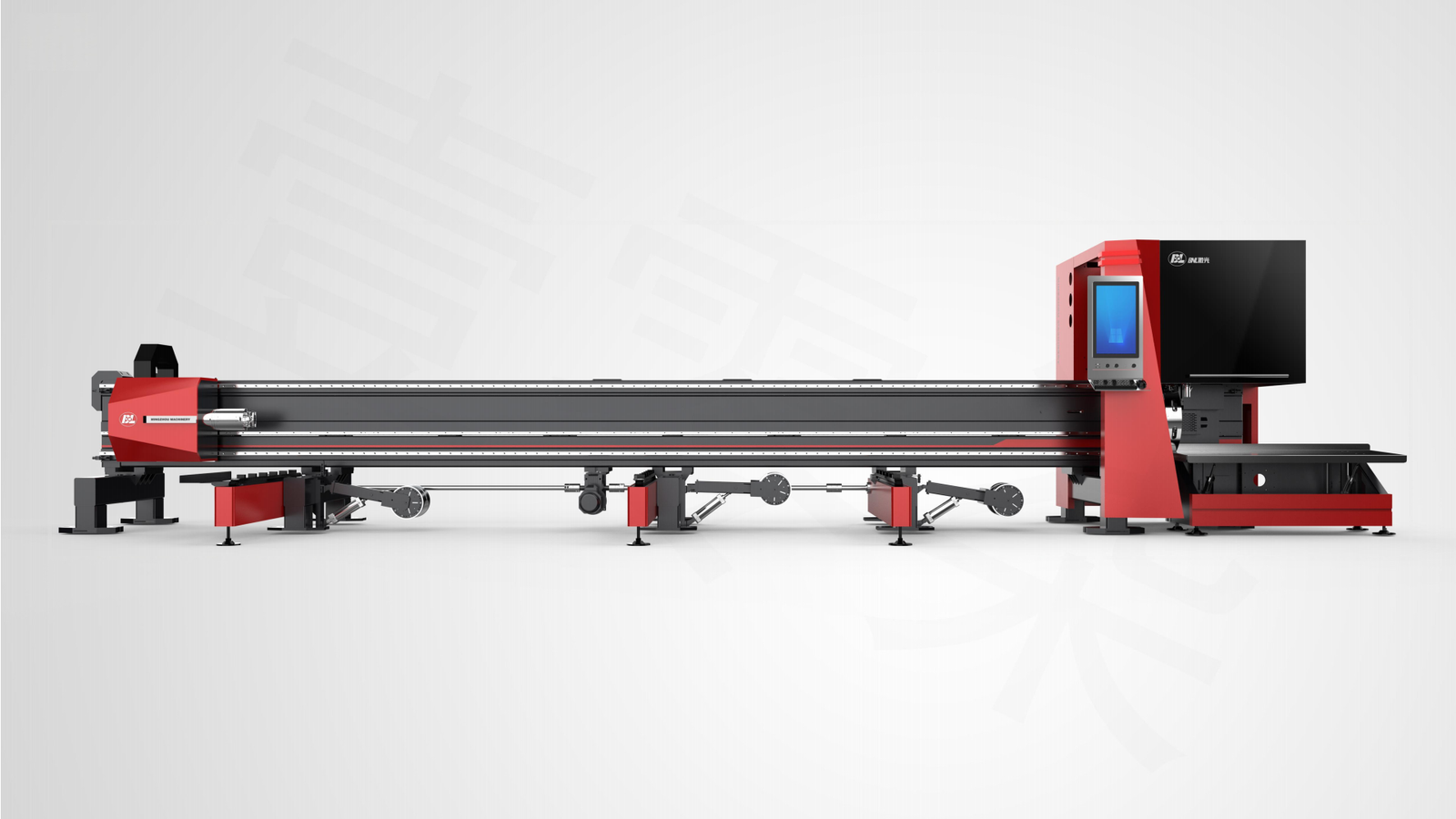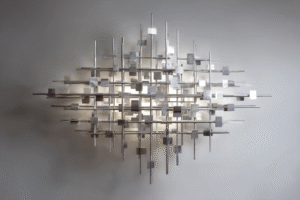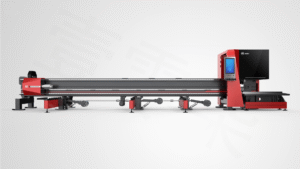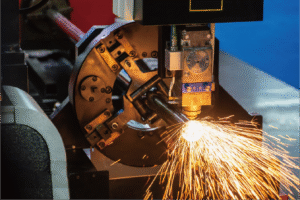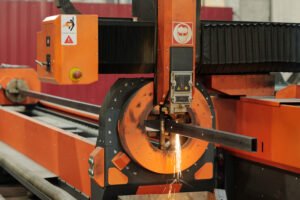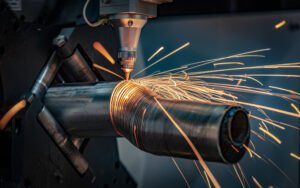Adapting to Customization: The New Role of Metal Tube Cutting Machines
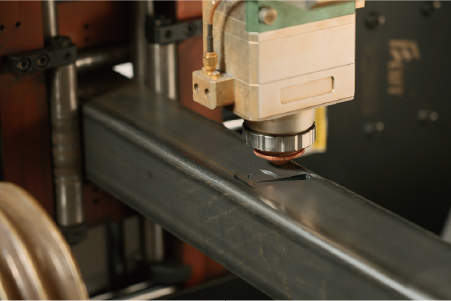
Are you struggling to keep up with the increasing demand for customized metal parts? The traditional, rigid manufacturing processes are no longer enough, leading to inefficiencies and lost opportunities. Discover how modern metal tube cutting machines are revolutionizing production, making tailored solutions not just possible, but profitable.
Metal tube cutting machines have evolved from basic tools into sophisticated, automated systems capable of intricate and precise customization, adapting to diverse industry demands. Their new role is pivotal in enabling on-demand production and meeting unique specifications with unprecedented efficiency and reduced waste.
As the global market shifts towards bespoke products and smaller batch runs, the capabilities of our manufacturing equipment must evolve in lockstep. This article delves into how these essential machines are not just cutting metal, but are shaping the future of fabrication, allowing businesses like yours to thrive in a highly competitive landscape. Join me as we explore this transformative journey.
The journey of metal tube cutting machines has been a fascinating one, mirroring the broader evolution of industrial manufacturing itself. From rudimentary manual operations to today's highly advanced, digitally integrated systems, each iteration has brought us closer to a future where precision and efficiency1 are paramount. Yet, this evolution isn't merely about speed or accuracy; it's fundamentally about adaptability – specifically, the ability to cater to the ever-growing demand for customization. My experience working with clients across Southeast Asia and Europe has shown me that the companies which embrace this shift are the ones that truly excel. For example, a recent study by McKinsey highlighted that personalized production can increase market share by up to 10% in some sectors. This isn't just a trend; it’s a fundamental recalibration of how we approach metal fabrication, challenging traditional bulk production models and pushing us to think more critically about flexible, responsive manufacturing. It sets the stage for a deeper discussion on how these machines are not just tools, but strategic assets in a customization-driven world.
Background Introduction: How have metal tube cutting machines evolved over the years?
Have you ever wondered how metal tube cutting, once a laborious manual task, became so effortlessly precise? Early methods were slow, prone to errors, and severely limited in complexity, hindering innovation. Explore the incredible transformation of these machines, from basic tools to the high-tech, automated systems we rely on today.
Metal tube cutting machines have evolved from simple manual saws to sophisticated CNC-controlled laser systems, drastically enhancing precision, speed, and automation. Early machines relied on mechanical force, progressing to abrasive cutting and then plasma, ultimately leading to the highly efficient and accurate laser technology prevalent today, enabling complex designs.
Looking back, the evolution of metal tube cutting technology is a testament to human ingenuity and the relentless pursuit of efficiency. I recall visits to older factories where cutting was a deafening, sparks-flying spectacle, heavily reliant on operator skill. The contrast with today's quiet, precise laser systems is striking. This transformation wasn't overnight; it was a gradual accumulation of innovations, each building upon the last, fundamentally reshaping what's possible in metal fabrication. From basic mechanical shears to advanced laser precision, these machines have continually adapted to meet increasingly complex demands, paving the way for the flexible manufacturing solutions we see today, crucial for businesses like Ahmed's that are looking to modernize and automate their workflows.
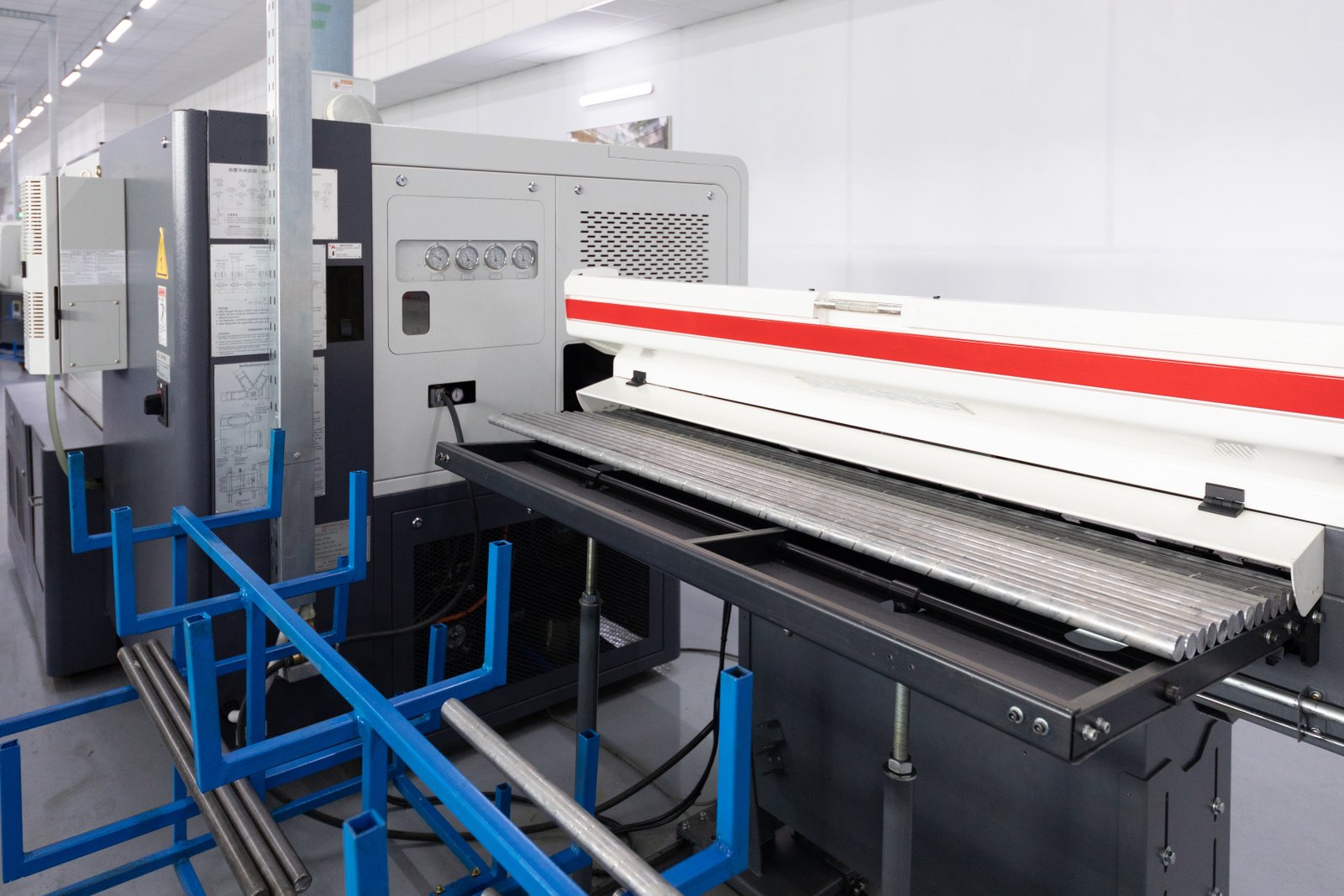
From Manual Labor to Mechanical Precision
In the earliest days, metal tube cutting was a purely manual endeavor, relying on hand saws, hacksaws, or basic cutting wheels. This process was incredibly labor-intensive, time-consuming, and highly dependent on the operator's physical strength and eye-hand coordination. Accuracy was inconsistent, and repeatability was a major challenge, leading to significant material waste and production bottlenecks. As industrialization gained momentum, the demand for higher volumes and better consistency spurred the development of mechanical cutting solutions. Bandsaws and circular saws emerged, offering greater speed and relatively improved precision compared to manual methods. These machines, while still requiring significant human intervention for setup and feeding, marked a crucial step towards mechanization.
The introduction of these early mechanical systems, though rudimentary by today's standards, laid the groundwork for future advancements. They allowed for the initial scaling of production, making it feasible to manufacture components for burgeoning industries like early automotive and construction. However, the cuts were often rough, requiring secondary finishing operations such as deburring or grinding. The tooling involved was specific to tube diameter and material, limiting versatility. Despite these limitations, the shift from purely manual to mechanical cutting represented a paradigm shift, recognizing the need for specialized machinery to handle repetitive, demanding tasks, a principle that continues to drive innovation in our field.
My own journey into metal fabrication, initially working with older equipment, instilled in me a deep appreciation for the progress we’ve made. I remember the sheer physical effort required, and how a single misaligned cut could scrap an entire piece. This firsthand experience reinforces why we at MZBNL are so committed to simplifying operations, making them less physically demanding and more precise, a clear departure from the challenges faced by previous generations of fabricators. This foundation of mechanical cutting, though basic, was the crucible in which the principles of machine-driven fabrication were forged.
The Dawn of Automated and Thermal Cutting
The mid-20th century witnessed the advent of automated and thermal cutting technologies, dramatically changing the landscape of metal tube processing. Plasma cutting, introduced in the 1960s, offered a faster and more versatile alternative to mechanical cutting, capable of handling thicker materials and more complex shapes by utilizing a high-velocity jet of ionized gas. Shortly after, the development of laser cutting technology in the 1970s marked an even more significant leap forward. Lasers provided unparalleled precision, minimal material distortion, and the ability to cut intricate geometries with exceptional edge quality, virtually eliminating the need for post-processing in many applications.
The integration of Computer Numerical Control (CNC) systems alongside these thermal cutting methods was truly revolutionary. CNC transformed machines from rigid, single-purpose tools into flexible, programmable assets. This meant that complex designs could be digitally programmed and executed with high repeatability and accuracy, reducing human error and increasing throughput. For industries requiring high-volume, precise component manufacturing, such as aerospace and medical devices, these advancements were critical. The ability to switch between designs rapidly by simply uploading a new program opened the door to greater customization and reduced lead times, setting the stage for the modern manufacturing era.
When I think about clients like Ahmed Al-Farsi, who is modernizing his metal fabrication business in the UAE, the importance of this shift to automated and thermal cutting becomes incredibly clear. His previous pain point was the reliance on skilled CAD operators and the high turnover they experienced. Modern laser cutting machines, especially those with advanced CNC and our No-CAD system, directly address this by simplifying operations. The ability to achieve high precision and speed without extensive manual intervention or traditional CAD drawings means businesses can significantly reduce their labor costs and training burdens, achieving better consistency and quicker turnaround on projects. A report by Grand View Research estimated the global laser cutting machine market at over $5.5 billion in 2022, projected to grow significantly, underscoring the widespread adoption and critical role of this technology in global manufacturing.
The Digital Revolution: Smart and Integrated Systems
The current era of metal tube cutting machines is defined by digitalization, smart integration, and an unparalleled focus on user experience. Beyond just cutting, modern machines now incorporate advanced sensors, real-time monitoring, and Artificial Intelligence (AI) for predictive maintenance and optimized cutting paths. The emphasis has shifted from mere automation to intelligent automation, where machines can self-diagnose, adapt to material variations, and even learn from previous operations to improve efficiency. This level of smart integration allows for truly lights-out manufacturing in some contexts, pushing productivity to new heights.
One of MZBNL’s key innovations, the No-CAD Operating System, perfectly exemplifies this digital revolution. Traditionally, operators would spend days, or even weeks, at the factory training on complex 3D CAD software. Our system eliminates this barrier by allowing standard tube types and hole patterns to be processed simply by entering parameters – no drawing required. This not only reduces the skill threshold but also dramatically shortens setup time, cutting on-site training from 15 days to just 1 day. This ease of use, combined with our Önden Beslemeli İnovasyon2 that boosts efficiency by 40% and reduces labor by 40%, directly addresses common industry pain points like skilled labor shortages and high operational costs.
Furthermore, the integration of multi-process capabilities, such as automatic punching and cutting in a single machine, offers unparalleled versatility. This reduces the need for multiple machines and handling steps, streamlining the production workflow significantly. Our Zero-Waste Tail Material Innovation, by calculating from the rear chuck, maximizes material utilization and boosts cutting efficiency, reflecting a growing industry trend towards sustainable and lean manufacturing. These smart, integrated systems represent the pinnacle of metal tube cutting evolution, delivering not just speed and precision, but comprehensive solutions that enhance overall operational intelligence and profitability for our global clients, enabling them to confidently pursue complex custom orders.
Laser cutting improves precisionDoğru
Laser cutting technology offers unparalleled precision and edge quality compared to earlier mechanical methods, enabling intricate designs with minimal material distortion.
Manual cutting was efficientYanlış
Manual metal tube cutting was labor-intensive and inconsistent, requiring significant physical effort and often resulting in material waste due to human error.
Current Situation Analysis: What is the current role of customization in metal tube cutting processes?
Are fluctuating market demands and unique project specifications challenging your production consistency? Traditional mass production often struggles to efficiently meet the rising need for bespoke products. Discover how customization has become indispensable in modern metal tube cutting, transforming operations and opening new avenues for growth.
Customization now plays a central role in metal tube cutting, shifting focus from mass production to agile, on-demand manufacturing. Modern machines facilitate this by enabling quick design changes, intricate cuts, and diverse material handling, crucial for industries requiring unique, tailored components with precision and efficiency.
In today's dynamic market, the 'one-size-fits-all' approach is increasingly obsolete. From bespoke furniture designs to specialized automotive components, the demand for tailored metal tubes is skyrocketing. I've witnessed firsthand how businesses that embrace customization are not just surviving but thriving, expanding their reach into niche markets and securing high-value contracts. This isn't merely about offering options; it's about fundamentally rethinking the production workflow to be inherently flexible, responsive, and innovative. The ability to pivot quickly, whether for a small batch of unique medical equipment frames or a large order of custom architectural elements, is what truly sets leading manufacturers apart in an era where client specifications are king.
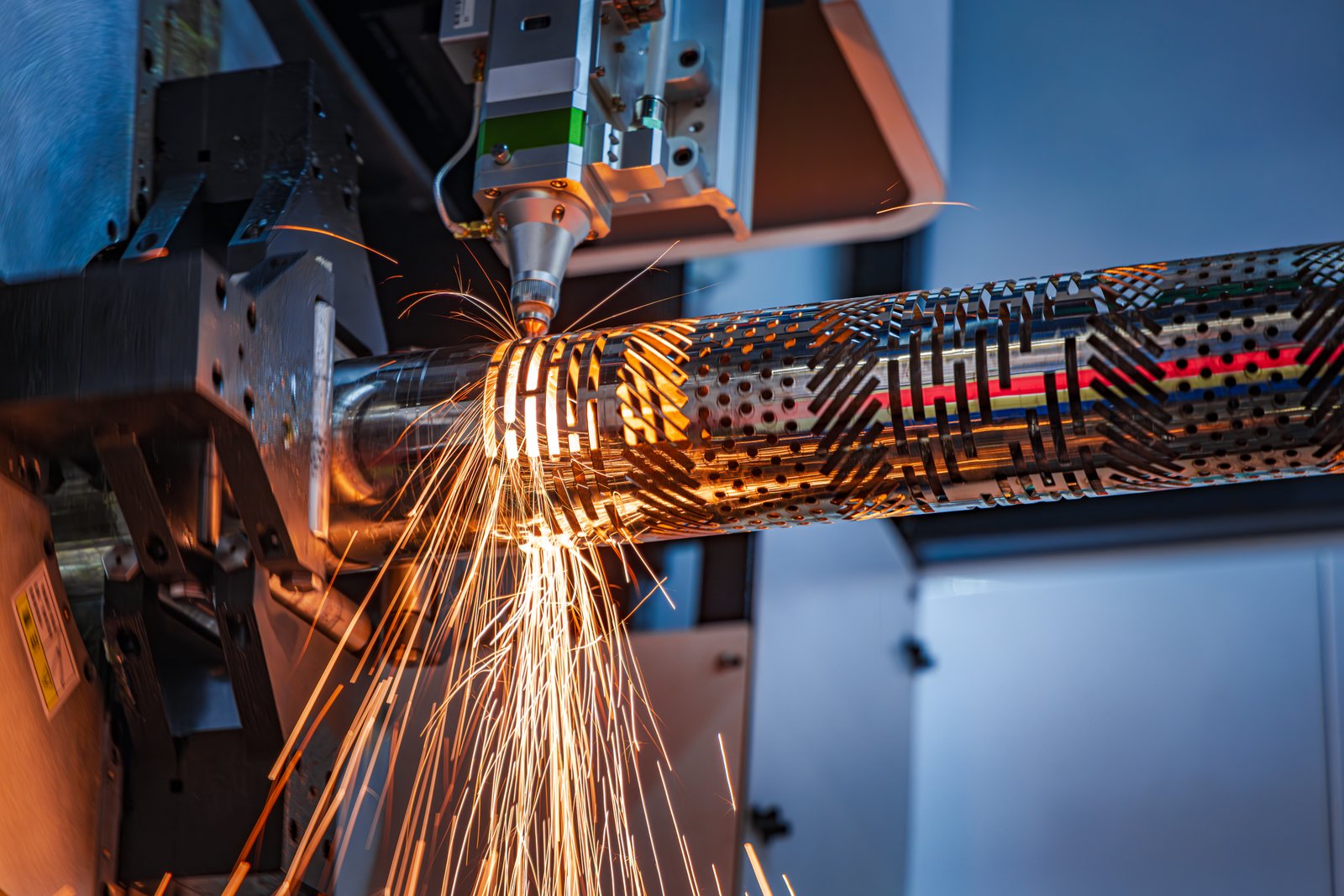
Meeting Diverse Industry Needs with Tailored Solutions
The landscape of modern manufacturing is characterized by an insatiable demand for diversity and specialization, a stark contrast to the mass production ethos of the past. Industries spanning from architectural design to medical equipment, and from automotive parts to bespoke furniture, all require uniquely dimensioned and shaped metal tubes. For instance, a luxury furniture designer might need tubes with specific curvature and perforations for an artistic piece, while a medical device manufacturer demands incredibly precise, sterile-grade cuts for surgical instruments. This necessitates a metal tube cutting process that is not only accurate but also highly adaptable to varying specifications, materials, and volumes, often with minimal lead times.
This push for customization is directly reflected in customer behavior. Buyers, like our typical client Ahmed Al-Farsi, are increasingly seeking out suppliers who can offer 'turnkey solutions' that are easy to install and operate, and critically, can be customized to their specific project requirements. Ahmed, with his extensive experience in architectural metalwork and vehicle parts supply, understands that his ability to deliver unique railing designs or specialized auto frames depends entirely on the flexibility of his machinery. Manufacturers who can quickly reconfigure their production lines to switch from one custom order to another—without significant downtime or retooling costs—gain a substantial competitive edge, transforming customization from a logistical nightmare into a core competency.
The evolution of materials also plays a crucial role. Modern metal tube cutting machines must handle a diverse range of metals—from standard steel and aluminum3 to specialized alloys like titanium or inconel, each with unique cutting properties. A report by MarketsandMarkets projected the global custom manufacturing market to grow significantly, driven by these niche demands. This diversification means that a machine that can only perform standard straight cuts is no longer sufficient. Businesses need comprehensive solutions that can manage varied thicknesses, complex geometries, and different material compositions, ensuring that whether it's for a lightweight aerospace component or a robust industrial frame, the machine delivers optimal results tailored to the exact specifications.
The Impact of Customization on Production Workflow
Embracing customization fundamentally redefines the entire production workflow, moving away from rigid, linear processes to more agile and iterative ones. Traditional mass production lines are optimized for efficiency in producing identical units, but they struggle with frequent changeovers, leading to costly downtime and increased waste when customization is introduced. In contrast, a workflow designed for customization emphasizes flexibility, rapid prototyping, and efficient batch processing, even for single units. This includes everything from the initial design phase, where CAD/CAM systems need to seamlessly integrate with machine capabilities, to the final inspection, where customized quality control measures are paramount.
The shift mandates tighter integration between design, planning, and manufacturing. For instance, our No-CAD Operating System exemplifies this by allowing operators to process standard tube types and hole patterns simply by entering parameters, eliminating the traditional bottleneck of sending designs back to a drafting office. This innovation dramatically improves ease of use and shortens setup time, reducing on-site training from 15 days to just 1 day. Such advancements allow a business like Ahmed's to quickly pivot from producing a batch of standard shelving units to a unique, custom-designed fence panel for a new architectural project, minimizing the impact on overall production schedules and maximizing responsiveness to client demands.
Furthermore, customization impacts material management and inventory. Instead of stocking large quantities of identical components, manufacturers must manage a wider variety of raw materials and partially finished goods. This requires sophisticated inventory management systems and just-in-time (JIT) delivery strategies to minimize holding costs while ensuring materials are available for diverse, on-demand production runs. The ability of modern machines to maximize material utilization, such as MZBNL's Zero-Waste Tail Material Innovation, which eliminates leftover tail material by calculating from the rear chuck, becomes incredibly valuable. This not only reduces waste but also optimizes material procurement, directly contributing to profitability in a customization-heavy environment. According to a study by Deloitte, companies that effectively manage custom production can see up to a 15% reduction in inventory costs and a 20% increase in on-time delivery rates.
| Customization Aspect | Traditional Mass Production | Modern Custom Production |
|---|---|---|
| Design Process | Standardized, fixed designs | Flexible, iterative, client-driven |
| Kurulum Süresi | Long, infrequent changeovers | Short, frequent reconfigurations |
| Malzeme Kullanımı | Standardized batches, potential waste | Optimized per project, minimal waste (e.g., zero-tail) |
| Operatör Becerisi | Specialized CAD, extensive training | Parameter-based, simplified (e.g., No-CAD) |
| Market Focus | Volume, low cost per unit | Niche, high value, tailored solutions |
The Strategic Advantage of On-Demand Customization
The capability for on-demand customization offers a significant strategic advantage in a globalized, highly competitive market. It allows businesses to move beyond competing solely on price and instead differentiate themselves through unique product offerings, faster delivery times, and superior customer service. This strategic shift enables companies to capture higher-margin projects and build stronger, more loyal customer relationships by directly addressing their specific needs. For a company like MZBNL, offering machines that facilitate such agility directly aligns with our mission of providing tailored solutions and technological innovation.
Consider the case of Ahmed Al-Farsi, whose business thrives on delivering finished parts to builders, decorators, and OEMs. His ability to produce custom railing designs for a unique architectural project or specialized auto parts for a specific vehicle model gives him a distinct edge over competitors who are limited to standard offerings. This flexibility allows him to enter new markets and expand his business in areas like architectural metalwork and vehicle parts supply, where bespoke solutions command premium prices. The machine's ability to handle complex punching and cutting for his projects is not just a feature; it's a direct enabler of his profit model.
Beyond direct client benefits, on-demand customization contributes to overall market resilience. In an unpredictable economic climate, businesses that can quickly pivot their production lines to meet fluctuating demands or unforeseen market shifts are better positioned to weather downturns. This agility reduces reliance on large, speculative inventory and allows for a more responsive supply chain. Furthermore, the ability to rapidly prototype and iterate custom designs accelerates innovation cycles, keeping companies at the forefront of their respective industries. This strategic flexibility, supported by cutting-edge metal tube cutting technology, transforms a manufacturer from a mere producer into a dynamic, innovation-driven partner for its clients, solidifying market position and fostering sustainable growth.
Customization is central to modern tube cuttingDoğru
The article clearly states that customization has shifted focus from mass production to agile manufacturing, becoming indispensable in modern metal tube cutting processes.
Mass production meets custom demands wellYanlış
The text explicitly mentions that traditional mass production struggles with customization needs, creating inefficiencies when handling unique project specifications.
Challenges Analysis: What challenges do manufacturers face in integrating customization with metal tube cutting machines?
Are you grappling with the complexities of integrating customization into your metal tube cutting operations? The demand for unique products often introduces bottlenecks, from design complexity to skilled labor shortages. Discover the core challenges manufacturers face and why traditional approaches fall short in today's bespoke production environment.
Integrating customization into metal tube cutting presents several challenges, including managing design complexity, ensuring precise execution, overcoming skilled labor shortages, and optimizing material utilization for varied orders.Custom tube cutting challenges Manufacturers often struggle with inefficient software, high setup times, and the need for adaptable machinery to meet diverse, on-demand specifications effectively.
While the benefits of customization are clear, the path to seamless integration is fraught with potential hurdles. In my experience working with countless factories worldwide, I've observed that these challenges aren't just technical; they often involve fundamental shifts in operational philosophy and workforce training. From the initial design phase to final delivery, every step needs to be re-evaluated through the lens of flexibility and precision. Overcoming these obstacles requires not only advanced machinery but also innovative thinking about how we manage data, talent, and resources. Let's delve into the specific pain points that many manufacturers encounter when attempting to scale their customized metal tube cutting capabilities.
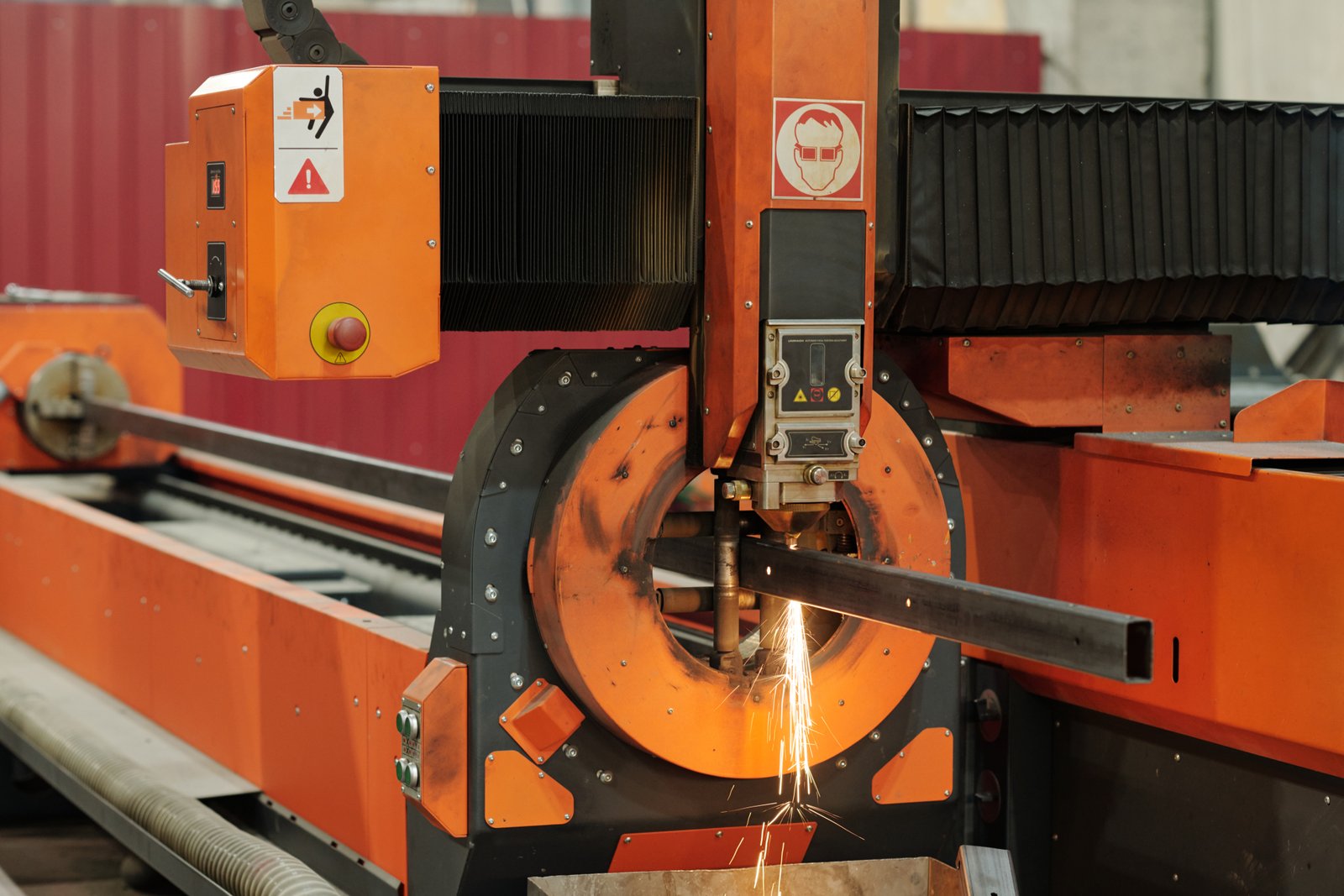
Managing Design Complexity and Software Integration
One of the foremost challenges in integrating customization lies in managing the sheer complexity of design variations. Unlike mass production, where a single design is repeated thousands of times, customization demands that each part, or small batch, might have unique dimensions, hole patterns, and intricate cuts. This often translates into complex 3D CAD drawings that require highly skilled engineers to create and modify. The traditional workflow involves a loop: design, send to production, realize an error, send back to design. This iterative process is time-consuming and expensive, particularly when dealing with tight project deadlines and numerous custom orders.
Furthermore, seamless software integration is paramount but often elusive. Many manufacturers use disparate software systems for design, machine control, and production management.Software integration challenges2 The lack of interoperability between these systems leads to manual data entry, errors, and significant delays. For instance, a design created in one CAD program might not translate perfectly to the machine's CAM software, leading to discrepancies that require costly manual adjustments on the shop floor. This fragmented approach undermines the very efficiency that automation promises, turning the pursuit of customization into a logistical headache rather than a streamlined process.
This challenge is precisely why MZBNL innovated the No-CAD Operating System. My client, Ahmed Al-Farsi, highlighted his pain point: "Previous machines required skilled CAD operators," leading to "high operator turnover" and "retraining burdens." Our No-CAD system directly addresses this by allowing operators to process standard tube types and hole patterns simply by entering parameters – no drawing required. This drastically reduces the reliance on highly skilled CAD personnel, shortens setup time, and minimizes human error, transforming design complexity from a barrier into a manageable, even simplified, aspect of the production process. According to a study published in the International Journal of Advanced Manufacturing Technology, poor software integration can lead to an average of 15% production time loss in complex manufacturing environments.
Overcoming Skilled Labor Shortages and Training Burdens
The advanced nature of modern metal tube cutting machines, while offering immense capabilities, historically came with a significant caveat: the need for highly skilled operators and programmers. This reliance on specialized talent creates a critical vulnerability for manufacturers, as the pool of experienced CNC operators and CAD designers is shrinking in many regions. High operator turnover, a common issue for businesses like Ahmed's, further exacerbates this problem, leading to continuous retraining burdens, increased operational costs, and inconsistencies in product quality. Finding someone with 15 days to dedicate to factory training for a new machine is a luxury many small to mid-sized businesses simply cannot afford.
Traditional training models often involve extensive, off-site courses or long on-the-job apprenticeships, which can be disruptive to production schedules and expensive.Skilled labor shortages in manufacturing4 Moreover, the learning curve for complex software interfaces and machine controls can be steep, leading to frustration and slower adoption rates. This means that even if a company invests in cutting-edge machinery, they might not be able to fully leverage its capabilities due to a lack of adequately trained personnel. This bottleneck limits a company’s ability to take on more complex or varied custom orders, effectively capping their growth potential in the customization market.
Our approach at MZBNL directly counters this challenge. With our No-CAD System Innovation, on-site training for machine operators is reduced from 15 days at the equipment factory to just 1 day. This remarkable reduction in training time not only addresses the skilled labor shortage by making the machines accessible to a wider range of operators but also significantly lowers operational costs associated with training and employee onboarding. By simplifying the interface and automating complex calculations, we empower existing staff to quickly master new equipment, ensuring continuous production and efficient handling of customized projects, thereby transforming a major pain point into a competitive advantage. This ease of use is a direct response to industry demand, especially in markets like Southeast Asia and the Middle East, where rapid deployment and operational efficiency are paramount.
Optimizing Material Utilization and Minimizing Waste
Customization, by its very nature, often involves producing unique or small batches of parts, which can lead to inefficient material utilization and increased waste compared to mass production. When cutting various lengths and designs from standard stock tubes, conventional cutting logic frequently leaves behind unusable "tail material" – short remnants that are too small for subsequent production and end up as scrap. This not only inflates material costs but also contributes to environmental waste, impacting a company's sustainability goals. For manufacturers operating on tight margins, every inch of wasted material directly affects profitability.
Furthermore, the complexity of custom designs can exacerbate this issue. Intricate cuts, angled edges, or unique hole patterns might require specific material orientations or lead-ins, which, if not precisely optimized, can result in more scrap. Traditional cutting software might not be sophisticated enough to dynamically nest different custom parts within a single tube to maximize yield, leading to inefficient layouts and unnecessary material consumption. This challenge is particularly acute when dealing with expensive specialty alloys or high-value materials, where every scrap piece represents a significant financial loss.
MZBNL’s Zero-Waste Tail Material Innovation was developed precisely to address this critical challenge. While conventional systems typically start cutting from the tube head and generate unusable tail material at the end, our redesigned cutting logic calculates from the rear chuck as the origin. This allows the system to eliminate leftover tail material, provided the remaining section is smaller than the product length. This innovative approach maximizes material utilization, minimizes scrap, and boosts cutting efficiency, leading to substantial cost savings for our clients. For Ahmed Al-Farsi, whose profit model relies on delivering finished parts, minimizing material waste is a direct contributor to his bottom line, especially when dealing with diverse contract-based fabrication services for railing, shelving, and auto parts. This proactive approach to waste reduction underscores our commitment to both profitability and sustainable manufacturing practices, setting a new industry standard.
Customization increases design complexityDoğru
Unlike mass production, customization requires unique CAD designs for each order, creating workflow bottlenecks.
Traditional training takes 15 daysYanlış
MZBNL's No-CAD system reduces operator training from 15 days to just 1 day, contradicting conventional requirements.
Response Strategies: How can businesses adapt their processes to meet the demands of customization?
Is your manufacturing process struggling to keep pace with the rising demand for customized solutions? Traditional rigid workflows often hinder agility and efficiency when faced with diverse orders. Discover key strategies that empower businesses to adapt their processes, ensuring seamless integration of customization and unlocking new growth opportunities.
Businesses can adapt to customization demands by adopting agile manufacturing principles, investing in modular and versatile machinery, and implementing advanced software for streamlined design-to-production workflows. Crucially, fostering a culture of continuous improvement and prioritizing operator training for new technologies also enables efficient and profitable customization.
The shift towards customization isn't just about acquiring new machines; it's about fundamentally rethinking how we operate. As someone who has spent 25 years in metal fabrication, I’ve seen that the most successful companies are those willing to challenge old paradigms. Adapting effectively means embracing a holistic strategy that encompasses technology, workflow, and human capital. It’s about building a responsive, intelligent manufacturing ecosystem where every component is optimized for flexibility and precision. Let's explore the actionable strategies that can transform your business into a leader in customized metal tube production.
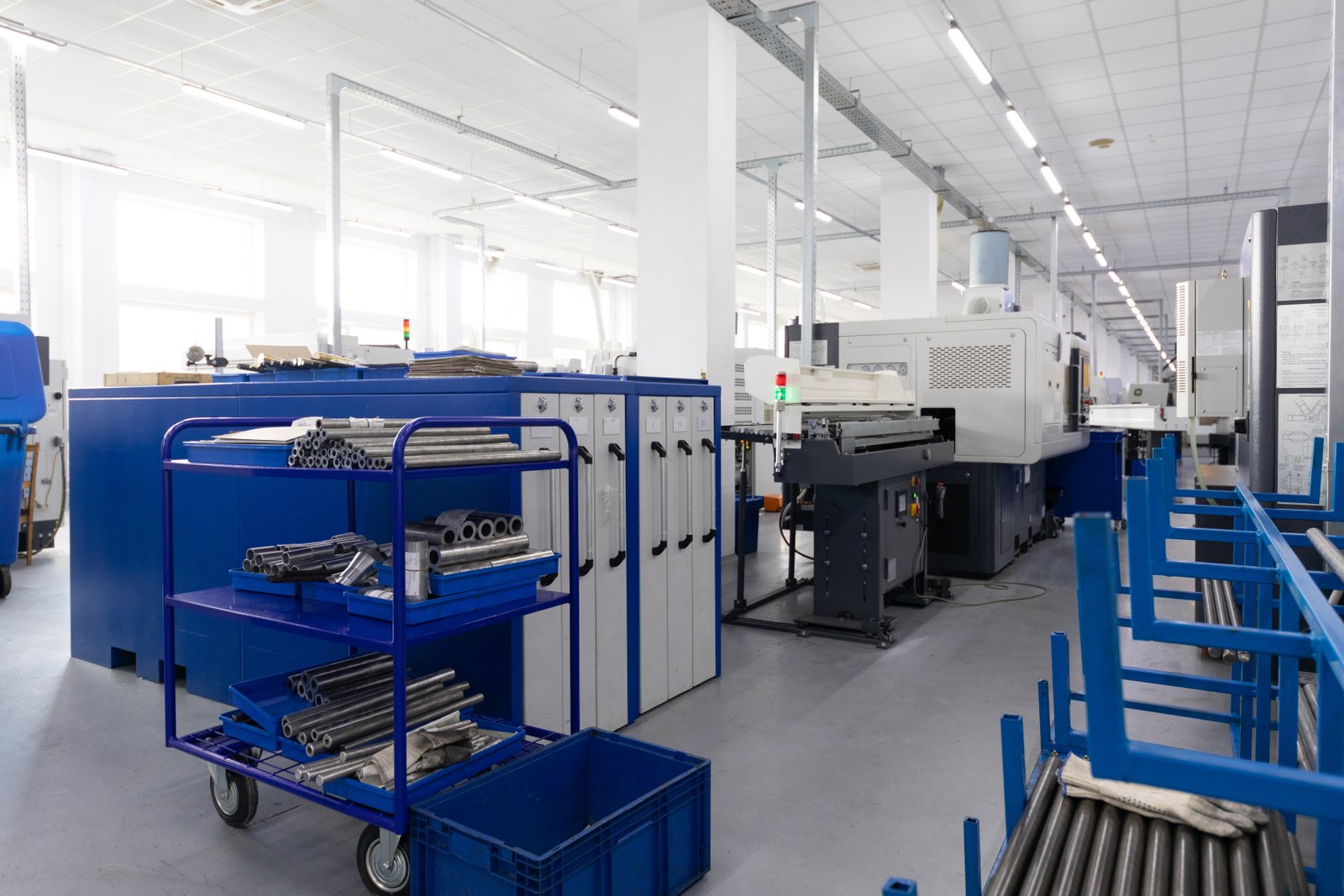
Implementing Agile Manufacturing Principles
Adopting agile manufacturing principles is fundamental for businesses aiming to excel in a customization-driven market. This involves moving away from rigid, long-term production plans towards more flexible, iterative processes that can respond quickly to changing customer demands and specific order requirements. Agile manufacturing emphasizes modularity, enabling quick reconfigurations of production lines and machinery for different products. This mindset shift means prioritizing rapid prototyping, short production cycles, and continuous feedback loops, allowing for immediate adjustments based on client input or unforeseen challenges.
For example, a furniture manufacturer could use agile principles to rapidly produce a small batch of custom-designed chair frames based on a new client's unique specifications, rather than waiting for a large production run. This responsiveness significantly reduces lead times and increases customer satisfaction. It also encourages a collaborative environment where design, engineering, and production teams work closely to resolve issues swiftly, ensuring that the final product precisely matches the custom order. This contrasts sharply with traditional sequential workflows, where delays at one stage can cascade throughout the entire process, making customization cumbersome and unprofitable.
The essence of agile manufacturing for metal tube cutting lies in leveraging machinery that supports quick changeovers and diverse material handling. Our lazer tüp kesme maki̇neleri̇5, with their high-speed and high-precision cutting capabilities, are designed to embody this agility. They allow for rapid switching between different tube types and cutting patterns, enabling businesses to fulfill varied custom orders without significant downtime. This inherent flexibility is what allows companies, particularly those like Ahmed Al-Farsi’s, to expand their business into diverse segments like architectural metalwork and vehicle parts supply, where customization is a key differentiator. The ability to pivot quickly is not merely a convenience; it's a strategic necessity in today's dynamic market.
Investing in Versatile and Smart Machinery
Strategic investment in versatile and smart machinery is perhaps the most critical adaptation for meeting customization demands. Traditional machines are often single-purpose, designed for efficiency in producing a narrow range of products. In contrast, modern metal tube cutting machines are built for multi-process integration, capable of performing various operations like cutting, punching, and marking in a single setup. This versatility reduces the need for multiple machines and minimizes material handling, thereby streamlining the workflow and significantly accelerating custom order fulfillment.
MZBNL’s product line, including our Laser Tube Cutting Machine and Automatic Punching & Cutting Integrated Machine6, exemplifies this shift. These machines offer "Multi-process integration" and "Cost-effective customized solutions," making them ideal for businesses like Ahmed’s that require varied capabilities for contract-based fabrication. For instance, Ahmed needs a machine with automatic feeding and punching capabilities for his architectural and automotive projects. Our integrated solution allows him to cut a tube, punch holes, and potentially engrave markings all within the same machine cycle, eliminating the need to move the part to separate punching or drilling stations. This integrated approach dramatically improves accuracy and efficiency for complex custom parts.
Furthermore, smart features embedded in these machines are transformative. Features like "Smart and digitalized systems" and the "No-CAD Operating System Innovation" address significant pain points associated with customization. The ability to start cutting without complex CAD drawings, simply by entering parameters, not only lowers the skill threshold for operators but also drastically shortens setup times for custom jobs. This means a business can accept a custom order on Monday, program the machine quickly, and have parts cut by Tuesday, demonstrating unparalleled responsiveness. The "Front-Feeding Innovation," increasing feeding efficiency by 40% and reducing operator labor by 40%, further highlights how smart design translates directly into operational agility, making customization not just feasible, but economically advantageous for our global clients across Southeast Asia, the Middle East, Europe, and North America.
| Feature Type | Traditional Machine Limitation | MZBNL Customization Advantage |
|---|---|---|
| Setup & Design | Requires skilled CAD operators, long programming | No-CAD System: parameter-based, 1-day training |
| Material Feed | Manual, slow, labor-intensive | Front-Feeding: automatic, 40% efficiency boost |
| Waste Reduction | High tail material waste | Zero-Waste Tail: maximizes material utilization |
| Process Flow | Multiple machines, handling steps | Multi-process integration: cutting, punching in one |
| Operation Ease | Complex, high skill barrier | Easy to operate & maintain, smart systems |
Prioritizing Training and Digital Skill Development
While advanced machinery offers unparalleled capabilities, its full potential can only be realized through a skilled workforce. Therefore, prioritizing comprehensive training and digital skill development for operators and technical staff is a non-negotiable strategy for businesses embracing customization. This goes beyond basic machine operation; it includes understanding software interfaces, troubleshooting common issues, and even basic programming or parameter adjustment for customized runs. Equipping employees with these skills transforms them from mere machine tenders into proactive problem-solvers and valuable contributors to the customization process.
For many businesses, the "high operator turnover" and "retraining burdens" experienced by clients like Ahmed Al-Farsi represent significant pain points. Traditional training methods often involve sending staff away for weeks of intensive factory training, incurring costs and disrupting production. Our commitment to simplified user interfaces and intuitive systems directly addresses this. Our No-CAD System, for instance, significantly reduces the learning curve, making sophisticated laser cutting machines accessible after just one day of on-site training. This approach democratizes access to advanced manufacturing, allowing businesses to rapidly upskill their existing workforce and reduce reliance on a small pool of highly specialized and expensive CAD operators.
Beyond initial training, fostering a culture of continuous learning and digital literacy is crucial. This includes regular refresher courses, access to online learning modules, and opportunities for operators to experiment with new designs or materials. Encouraging cross-training, where operators understand different parts of the production process, further enhances overall flexibility and resilience. By investing in their people, businesses not only improve operational efficiency but also boost employee morale and retention. Ultimately, the successful integration of customization is a symphony of cutting-edge technology and a highly capable, digitally empowered workforce, working in harmony to deliver bespoke excellence.
Agile manufacturing enables quick customizationDoğru
Agile principles allow rapid reconfiguration of production lines for diverse custom orders, reducing lead times significantly.
Customization requires only new machineryYanlış
Effective customization demands a holistic approach including workflow redesign, operator training, and cultural shifts beyond just equipment upgrades.
Technical Recommendations: What are the technological advancements helping metal tube cutting machines in customization?
Are traditional tube cutting methods limiting your ability to offer customized solutions? Manual processes and outdated machinery often hinder precision and efficiency in bespoke fabrication. Explore the groundbreaking technological advancements in metal tube cutting machines that are now making complex customization not just possible, but highly efficient and profitable.
Technological advancements like advanced CNC systems, fiber laser technology, and smart automation are revolutionizing metal tube cutting, enabling superior customization. Innovations such as No-CAD interfaces, zero-waste tail cutting, and multi-process integration significantly enhance precision, speed, material utilization, and ease of operation for complex, tailored designs.
In my 25 years in the metal fabrication industry, I’ve witnessed incredible leaps in technology, but few have been as transformative as those impacting metal tube cutting. The drive for customization has pushed manufacturers like MZBNL to innovate relentlessly, creating machines that are not just faster or more accurate, but fundamentally smarter and more adaptable. These aren't incremental changes; they are paradigm shifts that empower businesses to tackle previously impossible projects with confidence. Let’s dive into the specific technological breakthroughs that are defining the new era of customized metal tube cutting.
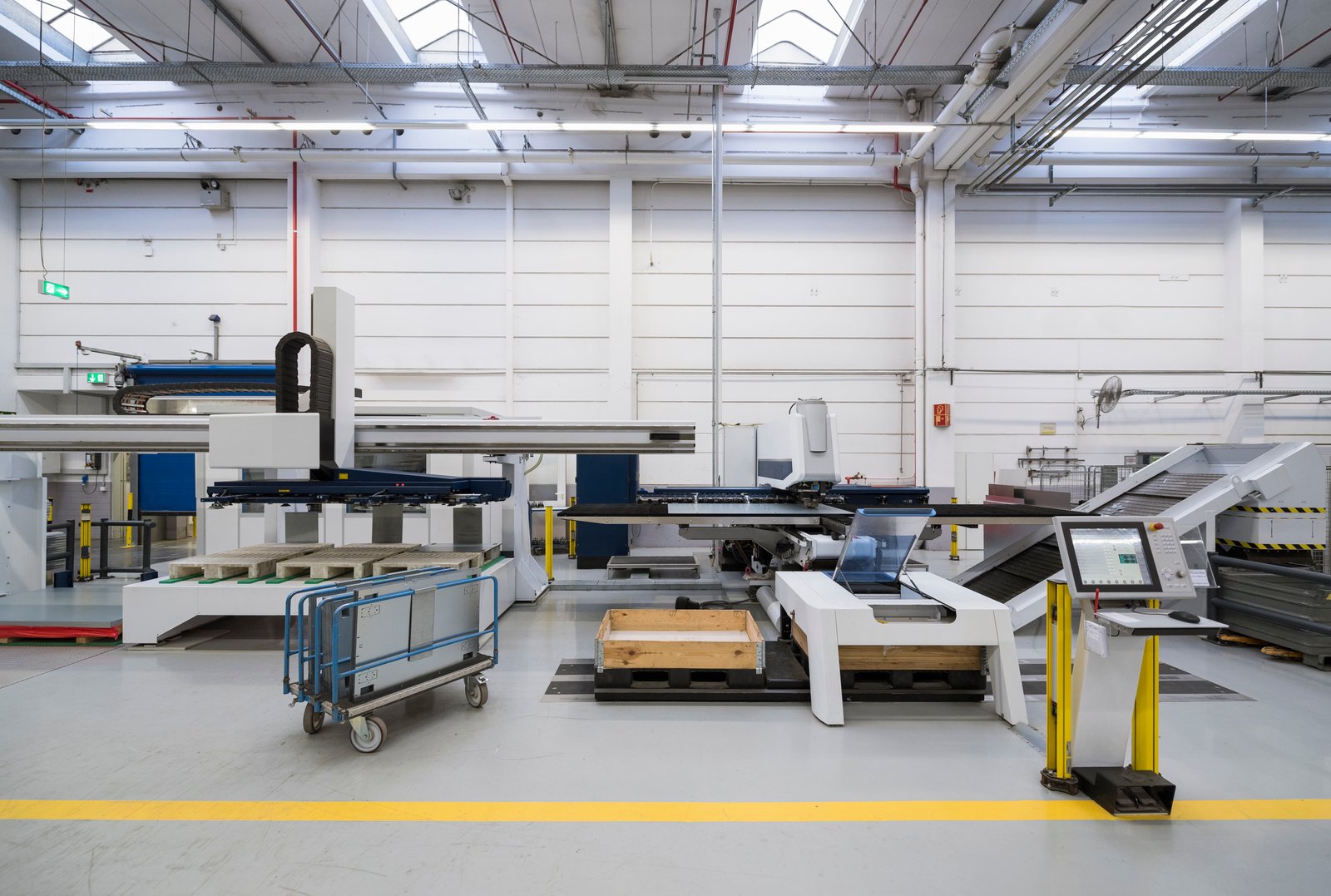
The Power of Advanced CNC and Fiber Laser Technology
The backbone of modern metal tube cutting customization is the symbiotic relationship between advanced Computer Numerical Control (CNC) systems and powerful fiber laser technology. CNC systems have evolved from simple programming interfaces to sophisticated, intelligent controllers capable of translating complex 3D designs into precise machine movements with unparalleled accuracy and repeatability. These systems can manage multiple axes simultaneously, allowing for intricate cuts, bevels, and perforations on tubes of various cross-sections, a capability essential for bespoke designs that go beyond simple straight cuts. This level of control ensures that even the most elaborate custom patterns are executed flawlessly, minimizing errors and material waste.
Fiber laser technology has proven to be a game-changer over traditional CO2 lasers. Fiber lasers offer superior beam quality, higher energy efficiency, and a significantly lower maintenance footprint. Their ability to deliver a highly concentrated beam enables faster cutting speeds for a wide range of materials, including reflective metals like copper and brass, which are challenging for other laser types. More critically for customization, the fine focus of a fiber laser allows for incredibly precise and clean cuts, producing intricate details and sharp edges that often eliminate the need for secondary finishing operations. This precision is vital when dealing with aesthetic components for furniture or exact fitments for automotive parts, directly impacting the quality and cost-effectiveness of custom fabrication.
For a company like MZBNL, our focus on "High-speed and high-precision cutting" is directly enabled by these advancements. For a client like Ahmed Al-Farsi, whose business thrives on delivering finished parts for architectural and automotive applications, the ability to achieve such precision at speed means he can take on more diverse and complex projects, knowing the output will meet stringent quality standards. The combination of advanced CNC with fiber lasers transforms the machine from a basic cutting tool into a highly intelligent, versatile manufacturing hub, capable of producing tailored components with efficiency and excellence. Data from industry reports indicates that fiber laser cutting can be up to 50% faster than CO2 lasers for thin to medium-thick materials, with operational costs potentially 30% lower due to energy efficiency and reduced maintenance.
Innovations in User Interface and Automation
Beyond raw cutting power, significant advancements have been made in making metal tube cutting machines more accessible and efficient for customization through innovative user interfaces and enhanced automation features. One of the most significant breakthroughs for MZBNL, and a direct answer to a common industry pain point, is our "No-CAD Operating System Innovation." Traditionally, performing custom cuts or hole patterns required operators to create or modify complex 3D drawings using sophisticated CAD software, a process that was not only time-consuming but also demanded specialized skills and extended training (often 15 days at the factory).
Our No-CAD system bypasses this bottleneck entirely. Operators can now process standard tube types and hole patterns simply by entering parameters directly into the machine's intuitive interface. This means that a custom request for a specific tube length with a unique hole pattern can be programmed and executed rapidly, without the need for an external design office or highly specialized CAD expertise. This innovation dramatically improves ease of use, shortens setup time for custom jobs, and significantly lowers the skill threshold for machine operation, reducing on-site training to just 1 day. This is a game-changer for businesses struggling with operator turnover or looking to rapidly scale their custom production capabilities.
Furthermore, innovations in automation, such as our "Front-Feeding Innovation," significantly boost overall productivity and reduce labor intensity. While traditional machines relied on cumbersome side or rear manual loading, our optimized front-feeding mechanism automatically pulls the tube in from the front, increasing feeding efficiency by approximately 40% and reducing operator labor intensity by about 40%. This enhancement is crucial for businesses aiming for high throughput on customized runs, as it minimizes manual intervention and streamlines the loading process. These user-centric and automation advancements are central to making sophisticated customization capabilities "Easy to operate and maintain," turning complex tasks into efficient, streamlined operations for our global clientele.
Maximizing Material Utilization and Multi-Process Integration
Two critical technological advancements directly impact the profitability and versatility of customized metal tube cutting: advanced material utilization strategies and multi-process integration. For custom orders, every piece of material is valuable, and waste reduction is paramount. Conventional laser cutting systems often generate unusable "tail material" at the end of the cutting process because they cut from the tube head. This results in significant material loss, especially when dealing with expensive alloys or diverse, short-run custom projects.
MZBNL’s "Zero-Waste Tail Material Innovation" directly addresses this inefficiency. We redesigned the cutting logic to calculate from the rear chuck as the origin. This allows the system to eliminate leftover tail material, provided the remaining section is smaller than the product length. This innovative approach maximizes material utilization, minimizes scrap, and boosts cutting efficiency, leading to substantial cost savings for our clients. This feature is particularly beneficial for businesses like Ahmed Al-Farsi's, which handle varied custom orders, ensuring that even small batch runs are as material-efficient as possible, directly contributing to his profit model.
Beyond waste reduction, the evolution towards "Multi-process integration" in a single machine offers unprecedented versatility for custom fabrication. Our Automatic Punching & Cutting Integrated Machine, for instance, allows for laser cutting, punching, and even marking within the same machine cycle without requiring the tube to be moved between different workstations. This integration eliminates secondary handling steps, reduces setup times, improves precision by avoiding repositioning errors, and consolidates multiple operations into one efficient process. This means a complex custom part requiring both intricate cuts and precise punching can be produced in a fraction of the time and with higher accuracy than if separate machines were used. This holistic approach to functionality is key to delivering "Cost-effective customized solutions" and positions MZBNL machines at the forefront of enabling comprehensive, highly efficient custom metal tube fabrication. The adoption of such integrated solutions is projected to grow by 8% annually in the metal fabrication industry, driven by the increasing demand for complex, tailored components.
Fiber lasers cut faster than CO2 lasersDoğru
Fiber laser technology offers up to 50% faster cutting speeds for thin to medium-thick materials compared to CO2 lasers, while also being more energy efficient.
No-CAD systems require CAD expertiseYanlış
No-CAD operating systems eliminate the need for CAD expertise by allowing operators to input parameters directly into the machine's interface, reducing training time from 15 days to just 1 day.
Sonuç
The evolution of metal tube cutting machines has redefined manufacturing, with customization now a core capability. MZBNL's innovations, like No-CAD and Zero-Waste Tail, empower businesses to efficiently meet diverse demands, reduce costs, and enhance precision. Embracing these technologies and agile strategies is essential for thriving in the bespoke production landscape.
-
Discover how front-feeding innovation boosts efficiency and reduces labor ↩
-
Understand the importance of software integration in reducing errors and delays in manufacturing. ↩ ↩
-
Understand the versatility and challenges of cutting aluminum in industrial processes. ↩
-
Learn how labor shortages affect manufacturing and how to mitigate this issue. ↩
-
Discover the role of laser technology in agile and flexible manufacturing processes ↩
-
Find out how versatile machinery can enhance custom manufacturing capabilities ↩
Sorularınız mı var veya daha fazla bilgiye mi ihtiyacınız var?
Kişiselleştirilmiş yardım ve uzman tavsiyesi için bizimle iletişime geçin.
